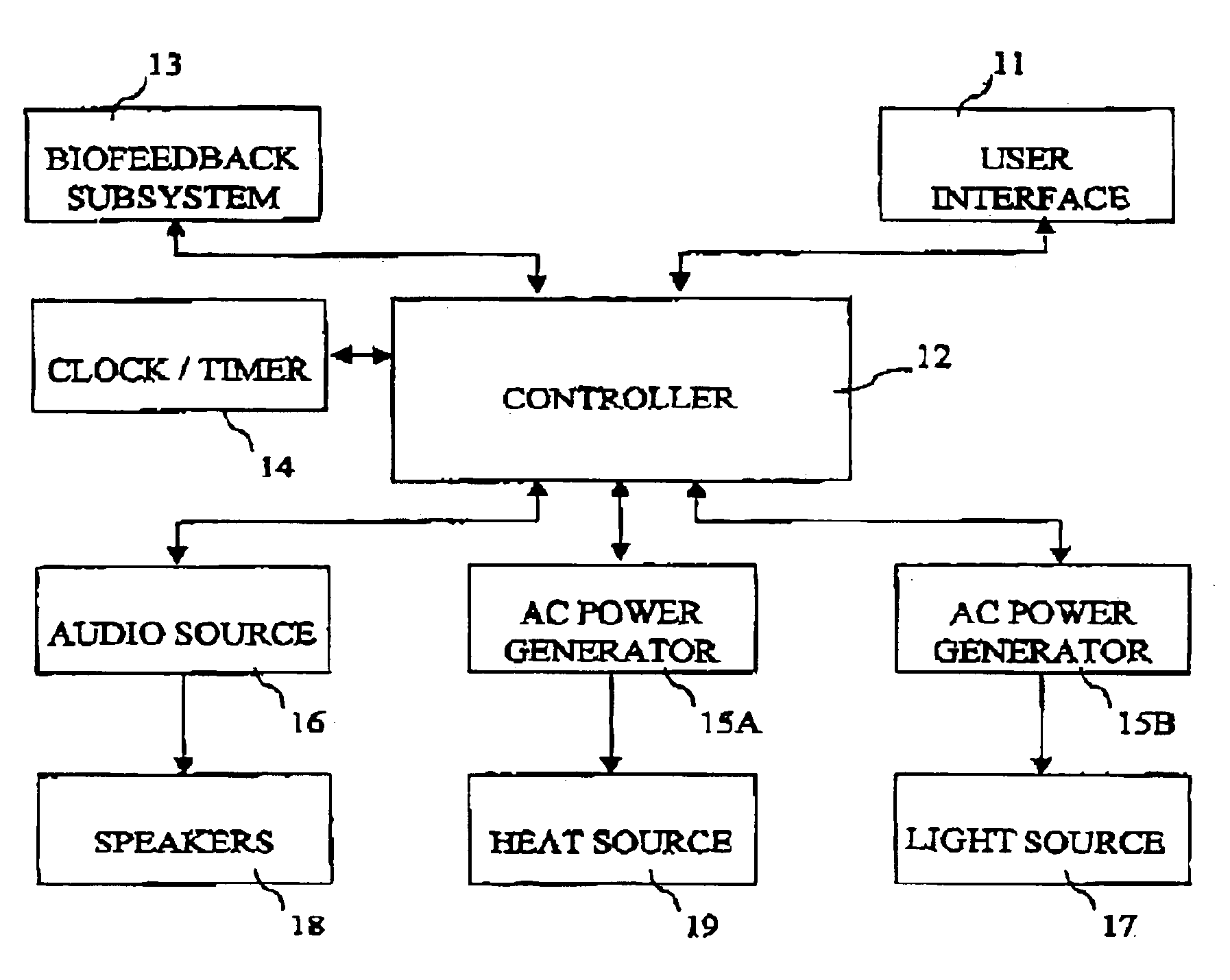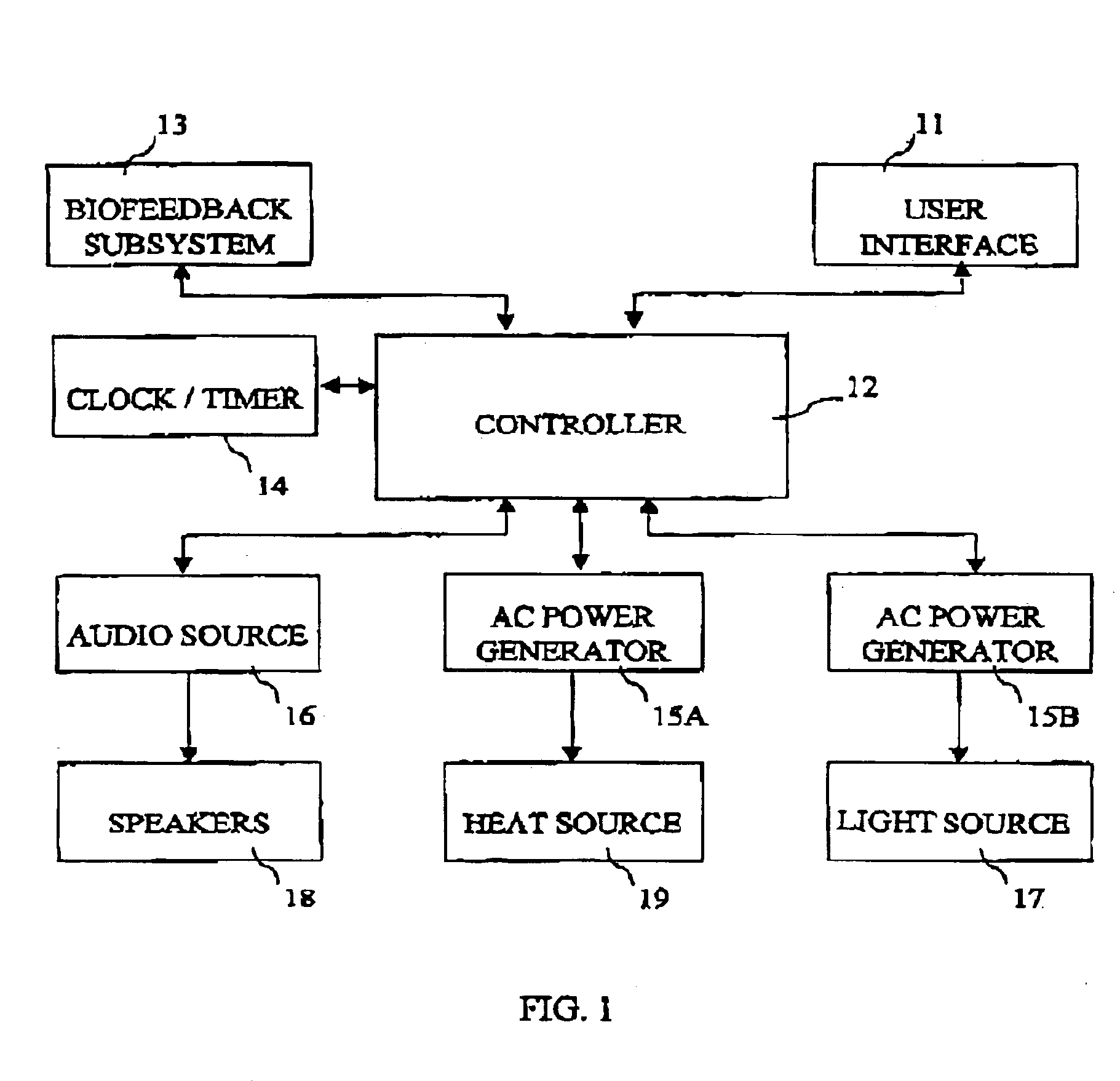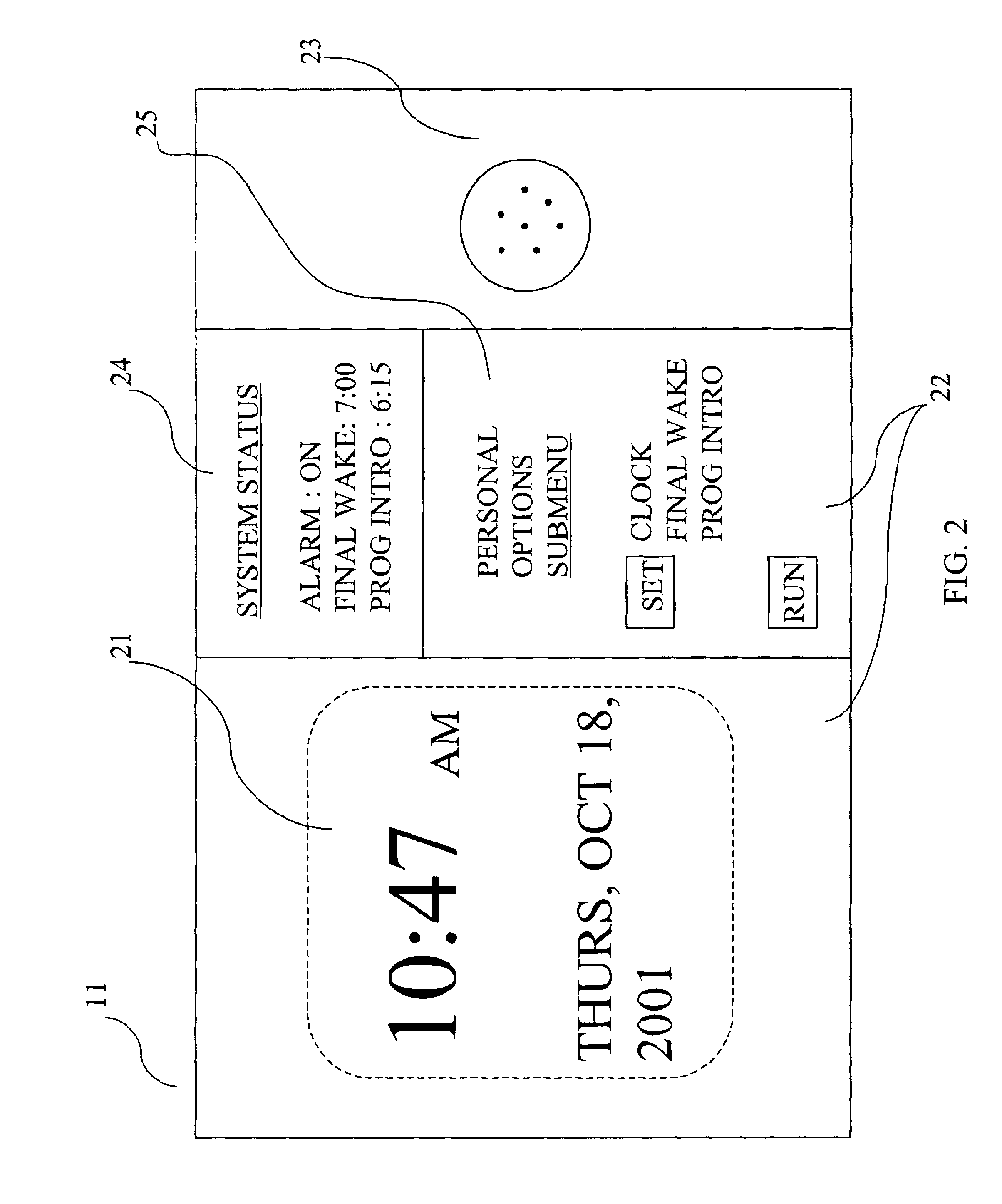Method and apparatus for a waking control system
- Summary
- Abstract
- Description
- Claims
- Application Information
AI Technical Summary
Benefits of technology
Problems solved by technology
Method used
Image
Examples
Embodiment Construction
[0029]Referring to FIG. 1, a system architecture is depicted for the waking system 10 in accordance with the present invention. The waking system 10 is made up of a number of distinct subsystems and components, each of which interacts with the controller 12. The controller 12 directs the interaction of the various subsystems and components with one another and is ultimately responsible for the operation of the waking system 10. In a preferred embodiment, the controller 12 is a microprocessor, such as the PIC 16C745, which can be used in an embedded system environment. However, the invention is not dependent on the type of controller 12 that is used. Other suitable controllers include: other microprocessor chips, integrated circuit controllers, printed circuit board controllers and even computers. In general, the controller 12 should be understood to include any device capable of accessing and executing instructions stored in memory and capable of interacting with its external enviro...
PUM
 Login to View More
Login to View More Abstract
Description
Claims
Application Information
 Login to View More
Login to View More - Generate Ideas
- Intellectual Property
- Life Sciences
- Materials
- Tech Scout
- Unparalleled Data Quality
- Higher Quality Content
- 60% Fewer Hallucinations
Browse by: Latest US Patents, China's latest patents, Technical Efficacy Thesaurus, Application Domain, Technology Topic, Popular Technical Reports.
© 2025 PatSnap. All rights reserved.Legal|Privacy policy|Modern Slavery Act Transparency Statement|Sitemap|About US| Contact US: help@patsnap.com



